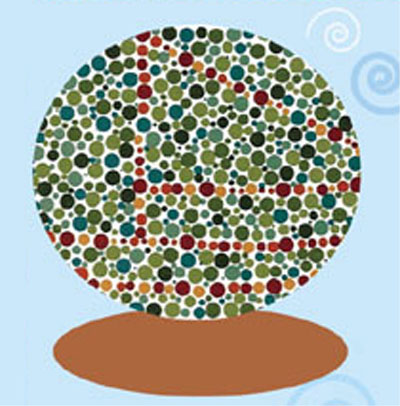![]()
People who have colour blindness, or colour vision deficiency are unable to perceive the difference between some or all colours. Colour blindness can be inherited genetically, but non-biological damages to the eye, nerve, or brain, as well as exposure to certain chemicals can also lead to colour blindness.
English chemist John Dalton published the first scientific paper on the subject in 1794, upon the discovery of his own colour blindness. That is why the deficiency is also sometimes referred to as Daltonism.
The Ishihara colour test is used to diagnose red-green colour deficiencies. It consists of a series of pictures of coloured spots. A figure - usually in one or more Arabic digits - is embedded in a visual comprising of many spots of slightly different colours. While people with normal colour vision can see the subtle variations, those who possess one or more colour defects do not.
Colour blindness is usually regarded as a disability. However, in some situations, colour-blind people actually have advantages over people with normal vision. Hunters who are colour blind, are better at picking out prey against a confusing background, and the military have found that colour blind soldiers can sometimes see through camouflage that fools everyone else.
Can you see the boat?
